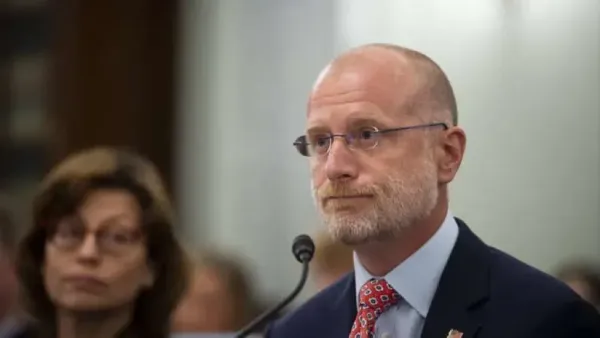What Challenges Are We Still Facing in Seniors Getting Online: What Have We Learned and What Are the Remaining Obstacles?
WASHINGTON Thursday May 17 2012 – Nearly two years after the American Recovery and Reinvestment Act’s (ARRA) broadband deployment and adoption projects were funded and the National Broadband Plan was adopted, we are still dealing with 100 million Americans who do not receive broadband in the home.
WASHINGTON Thursday May 17 2012 – Nearly two years after the American Recovery and Reinvestment Act’s (ARRA) broadband deployment and adoption projects were funded and the National Broadband Plan was adopted, we are still dealing with 100 million Americans who do not receive broadband in the home. While 65% of the population uses broadband, only 35% of Americans 65 and older are online. Government officials and industry representatives met on Tuesday morning to discuss the need for seniors to embrace technological development, the adoption efforts geared toward senior citizens, and whether or not those efforts are working.
Debra Berlyn, President of Consumer Policy Solutions and founder of Project GOAL (Getting Older Adults Online) co-hosted this month’s Broadband Breakfast on “What Lessons Are We Learning in Getting older Adults Online,” and introduced the Keynote speaker Anthony Wilhelm, Director, Broadband Technology Opportunities Program (BTOP), at the US Department of Commerce, National Telecommunications & Information Administration (NTIA).
Wilhelm began by comparing the task at hand with getting seniors online to his experience in 2008 working on the DTV transition. Wilhelm told the audience that he was struck by how valuable television was to many in this population demographic, often times it was their their primary source of information about the outside world.
His second takeaway was how important partnerships were for addressing the major challenges we face as a country. “Whether it is the transition to digital television or addressing the challenge of having 100 million Americans or 1 in 2 seniors without broadband in their homes, public-private partnerships are essential to attacking these problems effectively “ said Wilhelm. “Government, industry and non-profits need to all work together.”
The importance of internet to seniors is both social and economic. “Seniors need to be online to be productive and to be full participants in our society.” Wilhelm added, “It’s not so much what the internet can do for seniors but what seniors can do for the internet…seniors are the most experienced and some of the most creative members of our economy.”
The Director highlighted the efforts NTIA has been taking to address the issue of getting seniors online. First he pointed to the Digital Nation Reports, highlighting that the latest reports show an 11 percentage point divide between seniors and the population in adopting broadband in the home. The reports also show that when asked why they were not adopting, seniors had different reasons than the population as a whole. For seniors, the biggest barrier to entry was relevance, and were much less likely to give price as a reason.
Wilhelm saw this as a positive sign, “relevance I think we can overcome.” Many BTOP grants can address this issue, “we all know once you are online this is a barrier that is easy to overcome by collaborations between industry government and the non-profit sector”.
Wilhelm also placed a lot of emphasis on the portal that NTIA launched last May, digitalliteracy.gov, an interagency collaboration including the FCC, which brings together lessons learned from initiatives across the country and hosts all the data in one place. It allows practitioners solve problems in the field by analyzing what others have done, what has been working, and what curriculums are being implemented.
Wilhelm then provided some statistics regarding the 230 BTOP awards that were made in September 2010. As of March 31st, these projects, funded through BTOP, which have reached their half-way point have: deployed or updated more than 56,000 miles of broadband infrastructure, connected more than 8000 community anchor institutions to high speed internet, entered into 400 interconnection agreements with 3rd party vendors to leverage their networks, have installed more than 30,000 work stations in public computing centers, and have provided more than 7 million hours in computer training to over 2 million users.
Anyone can go to the BTOP website and click on the Connecting Americas Communities Interactive Map to find a visual depiction of where these investments have been made and for which purposes.
“So what are we learning?” asked Wilhelm. There are some key observations that have been drawn from the first two years of these projects’ existence.
“First,” said Wilhelm, “making broadband relevant to people’s everyday lives is important.” Connecting broadband to immediate needs such as finding a job, applying for benefits and connecting with family is the first step. “Demonstrating relevance for seniors, for example, often resides with educating them about connecting with friends and families via social networking platforms,” said Wilhelm.
The second observation the Director mentioned was the need for trusted intermediaries. He highlighted the importance of working with groups on the ground, local non-profits that are trusted and familiar to the senior community. Examples of success in adoption through intermediaries come from residents that were originally non users and then became trainers for others. Intergenerational programs that encourage students to train their own family members have also been among the most successful for reaching seniors.
The third observation is to meet people where they are. “Location of training centers in communities is important. Choosing locations that minimize travel for seniors is critical given mobility challenges for these citizens” added Wilhelm.
Fourth, projects should address challenges of fear of technology, for which the human interface is important. The director highlighted data that many first time senior internet users prefer one to one education over larger classes. Additionally programs should focus on the basics like using a mouse, logging on to email, and then further steps to address some of their fears about being scammed online.
Finally, “comprehensive services need to be taken into consideration,” stated the Director. Call centers and extra support was needed for users after their initial education.
Next, Josh Smith, Staff Reporter National Journal and moderator for the morning introduced the panel of experts which included: Josh Gottheimer, Senior Counselor to the Chairman, Federal Communications Commission, John Horrigan, Vice President, Policy and Research, TechNet, Tom Koutsky, Chief Policy Counsel, Connected Nation, Elizabeth Crocker, Executive Director, foundation for rural Services and Thomas Kamber, Founding Executive Director, Older Adults Technology Services (OATS).
Gottheimer began the conversation by answering a series of questions on the FCC’s role in addressing adoption concerns specifically for seniors.
From a digital literacy perspective Gottheimer noted that 66 million Americans are digitally illiterate and helping people gain these fundamental skills is where the FCC has been attempting to place their focus. He noted that 38% of public libraries have digital literacy classes and that by working with industry and non -profit partners, the FCC needs to focus on letting people know where they can get the education and training they need.
Gottheimer also noted that when it comes to relevancy, the social side of connecting to friends and family is very important for seniors. “Studies have shown that from a depression standpoint, there is a 20% decrease in depression rates among seniors that go online,” noted Gottheimer.
The benefits in terms of health are also enormous. If seniors remote monitor, they make less trips to the doctor and reduce medical costs. Another statistic Gottheimer used, showed that “for congestive heart failure, when there is remote monitoring there is a 6% re-admission rate, versus the national average, 47% re-admission rate.”
When asked about how the needs of seniors mesh with the agency’s broader efforts to address adoption and deployment of broadband, Gottheimer referred to the USF reform efforts. “Many lower income Americans are also elderly.” To address costs the FCC has launched Connect to Compete, which targets cutting costs for lower income school lunch families. In many of those pilots noted Gottheimer, ones that provide students with physical computers, it is the children that end up teaching the parents and grandparents.
Gottheimer believes that in an environment where technology is developing so fast, more of an emphasis needs to be placed on the basics, how to use a mouse, how to turn on a computer, then how to use different software. “We have to give everyone the basic building blocks and ability to feel comfortable online first.”
A debate was raised when an audience member asked, why did the lifeline broadband adoption program not include any funding for digital literacy?
Gottheimer responded by stating that the funding was restricted by the statute, but there has been an additional proposed rule to allocate some of the USF savings towards digital literacy programs. Some member of the audience and the panel seemed to disagree however noting that there is debate over what the statute said and whether it allows for the funding of digital literacy programs as well.
Koutsky believed “funding digital literacy is both ancillary and reasonable. It is obviously ancillary to a program where we are going to be funding broadband deployment that we would also fund the use and adoption of the technology that we are about to subsidize.”
Smith then brought the questions back to the panelists and asked the industry experts about what lessons they have learned in promoting adoption for seniors and what are the greatest obstacles?
Horrigan believes that two things are needed to get seniors online, one is urgency and the other is measurements. If we look at mobile phones, there has been an explosion in connectivity while broadband adoption has stalled, however only 13% of seniors are using smart phones. One of the largest growing sectors in the App market is in the Healthcare app department. “So you have seniors with a large demand for healthcare services lacking the devices that can get an app to them to measure their health and wellness,” added Horrigan. “Urgency is getting seniors online to take advantage of the growing technologies that are providing greater value for them; urgency increases as technology advances.”
Horrigan also stressed measurement. “We need to measure the impact of various initiatives out there to get seniors online so that we understand the recipe for creating sustainable broadband adopters.” Measurement is needed to make sure that the government’s scarce resources are properly targeted and allocated effectively.
Koutsky is looking forward to the next two years of the BTOP programs in order to figure out what worked and what did not. Then efforts should be made to place resources towards the efforts that actually worked.
Koutsky’s work through Connected Nations has shown that personal connections are most important when getting seniors to connect online. He noted that the FCC has only proposed to offer digital literacy through class rooms and in institutions that have not offered this training before.
Crocker, whose member organizations are rural telcos, has observed positive impact from their mobile computer lab and digital literacy programs. The rural providers have a vested interest in getting more subscribers online. The operators of the telcos are also all connected to their communities and often use very creative community based ideas to help get seniors online. The biggest obstacle for these companies however is money, while they would like to connect every home to broadband they often times do not have the resources available.
Kamber, the Executive Director of OATS believes that adoption of technology with seniors is a structural problem that has existed since at least the 60s. The way to address these structural issues is to focus first on the basic technologies like getting online and email.
There are also issues of resiliency and information access, added Kamber. With seniors some major issues center around lack of opportunity to observe in action and understand the value proposition of new tools. “Triability” is important, the concept where a user can test something out and come back to it at a later time and try again. These broader issues concerning the characteristics of adopting technology also need to be addressed.
Kamber also asked how we are going to “take the groups that have built capacity and strategic capability and then make the transition from BTOP.” He wants to know how we are going to build a national training infrastructure from the information we have gained in order to best leverage government investment.
Berlyn then asked the panelists to talk about wireless. All technology is moving to wireless. A tablet, she mentioned is more mobile and perhaps more intuitive and might present less of a digital literacy challenge.
Corker agreed that wireless is important but reminded the audience that it is a tough sell for rural areas because there are not many cell towers.
Koutsky thought tablets were a good way to get around the subscriber model. Connectivity is bundled into wireless.










Member discussion